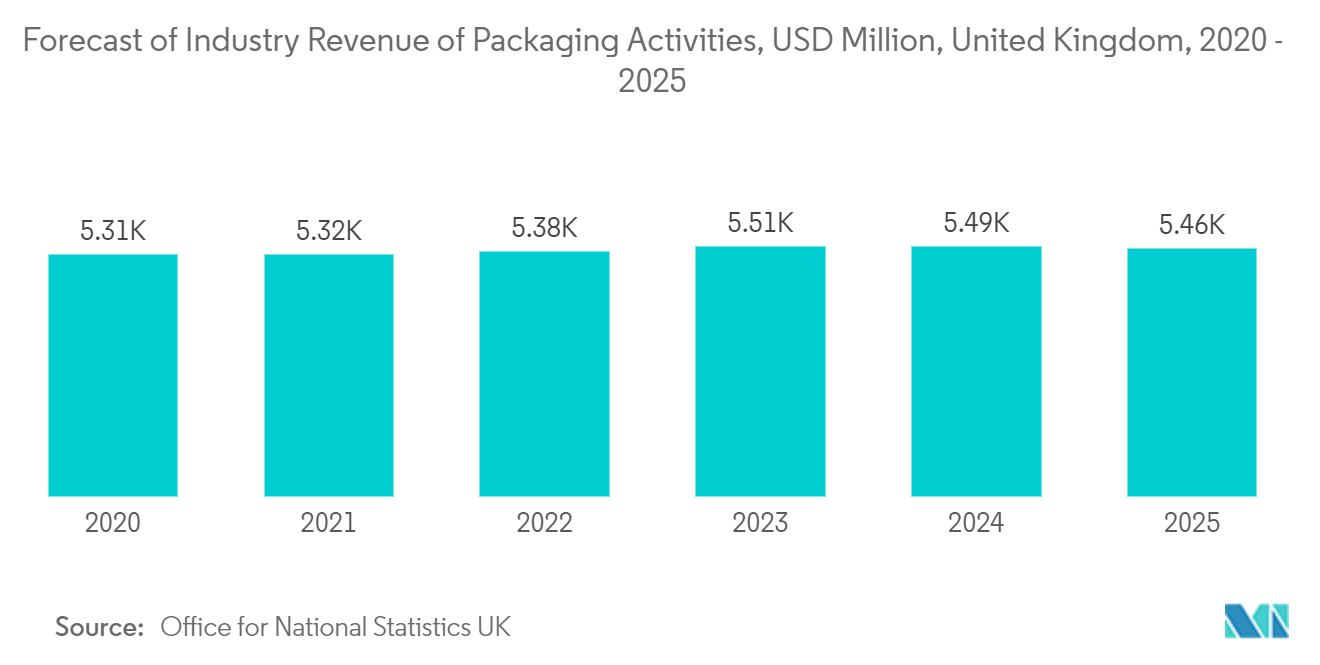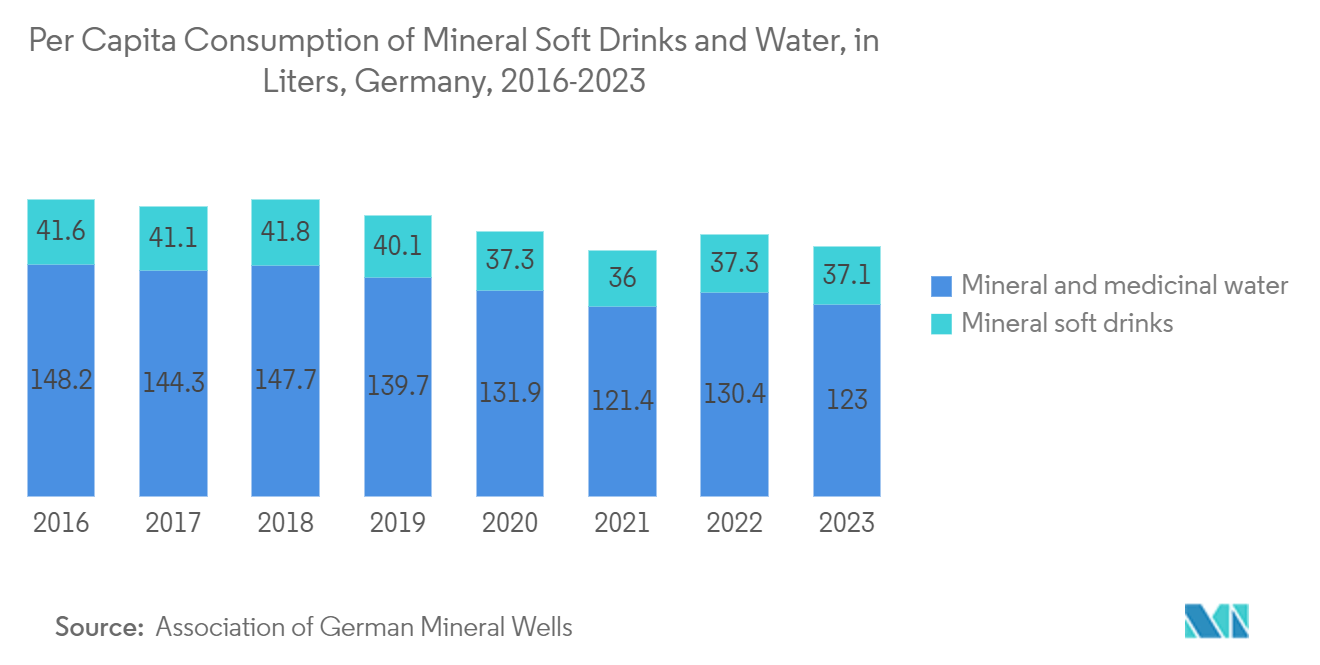Market Trends of Europe Plastic Packaging Industry
Flexible Packaging to Grow Significantly
- The retail industry is expanding due to rising demand for packaged food and non-food items across Europe. It creates a one-of-a-kind demand for flexible packaging solutions, which is expected to accelerate the growth of the plastic packaging market significantly.
- Flexible packaging increases product sustainability by increasing shelf life and enabling the introduction of new products, such as frozen food, which can realize through flexible packaging. Food production experienced an unprecedented surge at the pandemic's start, while some fast-moving consumer goods (FMCG) manufacturers repurposed production lines.
- Various vendors have been focusing on strengthening their position in flexible packaging, broadening their portfolio of sustainable solutions, and expanding their regional reach. In May 2022, FlexCollect, one of the most significant collaborative projects to support the collection and recycling of flexible plastic packaging in the United Kingdom, launched UK Research and Innovation (UKRI) support. FlexCollect would also help organizations understand how to incorporate flexible plastic packaging into existing household collection services across various geographies and demographics to maximize recovery and recycling.
- In March 2022, UK Research and Innovation’s (UKRI) Smart Sustainable Plastic Packaging (SSPP) Challenge announced GBP 30 million (USD 39 million) in funding for 18 collaborative projects that support the achievement of the UK Plastics Pact and have the potential to alter the UK’s relationship with and management of, plastic packaging. The SSPP Challenge represents one of the largest government investments in sustainable plastic packaging and waste management. The results of the two funding competitions witness 5 large-scale demonstrator projects, and 13 business-led research and development projects benefit from this backing.
- Further, due to many improvements in Germany by solution providers and various end users, flexible plastic packaging solutions are increasingly being adopted. The usual customer view of "Made in Germany" products has given the area's local, flexible packaging businesses an ideal performance environment. The German government has enacted several strict laws for the country's plastic packaging sector. The German package Law mandates using recyclable and renewable materials and package design for recycling and recyclability. By 2022, the government wanted to recycle 63 percent more plastic packaging than in 2018, up from 40 percent. Such actions are anticipated to significantly influence the target market in the expected time frame.

Beverage Segment is Expected to Witness Significant Growth
- The beverage industry plays an essential role in the European region. The primary factors driving the region's growth in the beverage industry include steadily increasing population, per capita income, and changing lifestyles. Furthermore, factors such as high disposable income, ease of availability, improved living standards, a diverse product offering, and the presence of domestic and international players in the market fuel the beverage industry in the region.
- Many of the leading brands in Europe have a variety of fruit and sweet-flavored non-alcoholic beverages, and these are the most popular products. Besides, the EMA has introduced an initiative encouraging manufacturers to cut salt, sugar, and fat content in food and beverages. Companies that have pledged to follow this include Mars and Nestle.
- Furthermore, it is anticipated that Europeans would prioritize off-premise consumption over on-premise consumption when alcohol consumption rises steadily once the lockdown limitations are relaxed. Alcohol consumption outside licensed establishments is beneficial for expanding the flexible packaging industry. In the industry under study, alcoholic beverages sold in single-serve pouches are only a few significant examples of products becoming increasingly popular.
- Suntory, the beverage company in the region, has pledged to eliminate virgin plastics, such as fossil-fuel-based plastics, from its packaging portfolio by 2030. Such initiatives from other industry players may limit the market's growth during the forecast period.
- Moreover, the companies are investing in beverage manufacturing capacity expansion. For instance, in May 2022, Ecotone, a specialized player in organic and plant-based alternatives in Europe, announced a EUR 20 million (USD 21.5 million) investment in its plant-based beverage production site in Badia Polesine, Northern Italy. The significant investment has enabled the creation of a new production line, making it one of the key players in European plant-based drinks producers. This new site and production line will allow the multinational food company to produce an additional 27 million liters of plant-based beverages per year, a 30 percent increase in production capacity.
- The Economic Association of Non-Alcoholic Beverages estimates that the typical German used 6.6 liters of energy and mineral drinks in 2022 and 6.4 liters in the previous year. To accommodate the rising number of goods, there will likely be a more significant demand for packaging materials as mineral and energy drink consumption rise. This may increase the need for plastic bottles, caps, and other packaging elements, especially for these drinks.

